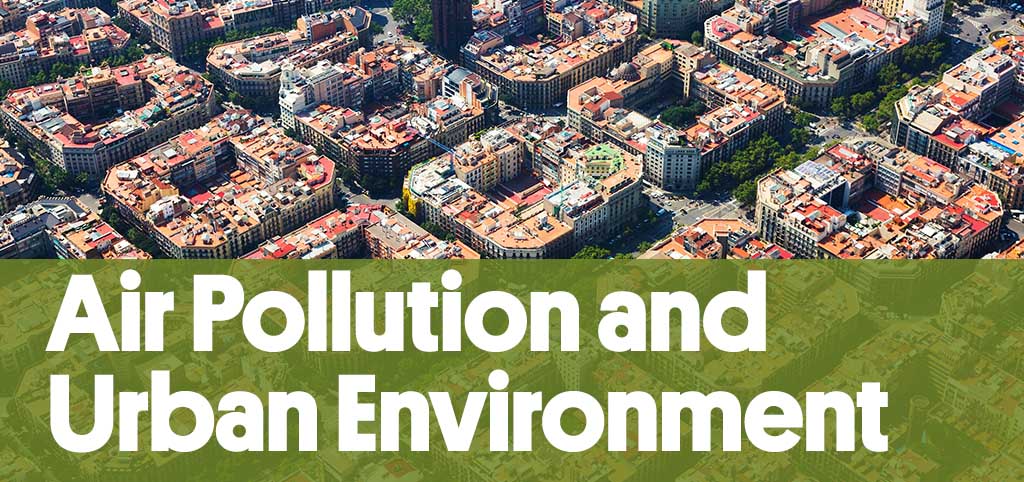AFFSET-MOSS

- Duration
- 2008
- Coordinator
- Nino Kunzli
- Funded by
- Agence Française de Securite Sanitaire de l’Environnement et du Travail
Mosses have been widely used as biomonitors since the 1980s, serving to characterize outdoor levels of pollution. This pilot study uses mosses for the first time to monitor indoor air quality. The aim was to pilot whether moss samplers can be deployed indoors and outdoors, to develop the related methods and logistic needs, to analyze and describe the content of indoor and outdoor toxicants (PAH and metals) deposited in the mosses, and to discuss the potential value of moss sampling to monitor markers of indoor air pollution from outdoor and indoor sources.
Methods:
Mosses (Hylocomium splendens) naturally grown in a rural area close to Salzburg
(Austria) were used as active monitors, located at 20 sites selected across the adjacent cities of Girona and Salt in Catalunya (Spain). All sites were non-smoking households with a balcony.
Locations were spread across the towns, and represented the distribution of NO2 concentrations, known from previous measurement campaigns conducted across the city.
Standard methods developed by the team of Dr. H. Zechmeister, University Vienna, were used in all moss sampling procedures. At each location, mosses were deployed for two months at an outdoor and indoor wall. NO2 Palmes tubes (AEA Technology, Oxford) and ORSA 5 BTX samplers from Dräger were exposed in parallel, at all locations, for two 1- months periods as a more traditional approach to characterize mostly traffic related air pollution. For quality control purposes, participants were occasionally called, and all homes were visited at the beginning, after the first months, and at the end of the measurement period.
In total, seven questionnaires were administered during these visits to characterize local conditions and potentially influential habits or events. Laboratory analyses of moss samples: Polycyclic aromatic hydrocarbons (PAH) concentrations were measured by high performance liquid chromatography (HPLC) in combination with fluorescence detection (FLD) at the certified Austrian Umweltbundesamt GmbH laboratory. Metal concentrations were measured by inductively coupled plasma-sector field mass spectrometry (ICP-SFMS) with elemental analyses carried out on an Element 2 ICP-SFMS (ThermoFisher, Bremen, Germany).
Results:
All monitors were successfully deployed and exposed for two months (100% response rate). The indoor deployment did not pose problems, and participants were very collaborative. The outdoor locations were sufficiently protected against the heavy rains that unexpectedly hit Catalunya during the measurement period in May 2008. The first site visits were time intense, requiring some two hours of preparation followed by up to four site visits on any given day. PAH values were typically higher indoors while metal deposition was in general higher in the outdoor moss. A substantial number of samples resulted in concentrations below detection limit.
Conclusion:
This pilot study has set a precedent on indoor monitoring with mosses, and confirmed the successful use of mosses in outdoor monitoring. The pilot developed the methodology for sampling indoor and outdoor environments in homes of study participants, and deployment, quality control, and dismantling has been proven to be feasible in a city like Girona/Salt. Adaptations of protocols along the issues observed, in particular the extension of monitoring periods, will strengthen the novel approach to long-term monitoring of particle bound pollutant
Other projects
PRISMA-CAT
Protecting Respiratory Health in Catalonia: Climate, Pollution, and Patient Perspectives
PULSE-ART project
Promoting Understanding and Lifelong learning Successful Education through the ARTs and culture
HHS-EWS
Operational Heat-Health-Social Early Warning System
FORECAST-AIR
Open-Access Forecasting System of the Health Effects of Air Pollution
ADATES
Adapting to temperature extremes in a changing climate: Past trends and future scenarios
B-COOL@HOME
Cooling older adults' homes in Barcelona
PANAMA
Inhaled dose of air pollution - an integrative approach towards personalized air pollution exposure assessment in participants with and without respiratory diseases
RESONATE
Building individual and community resilience through nature-based therapies




